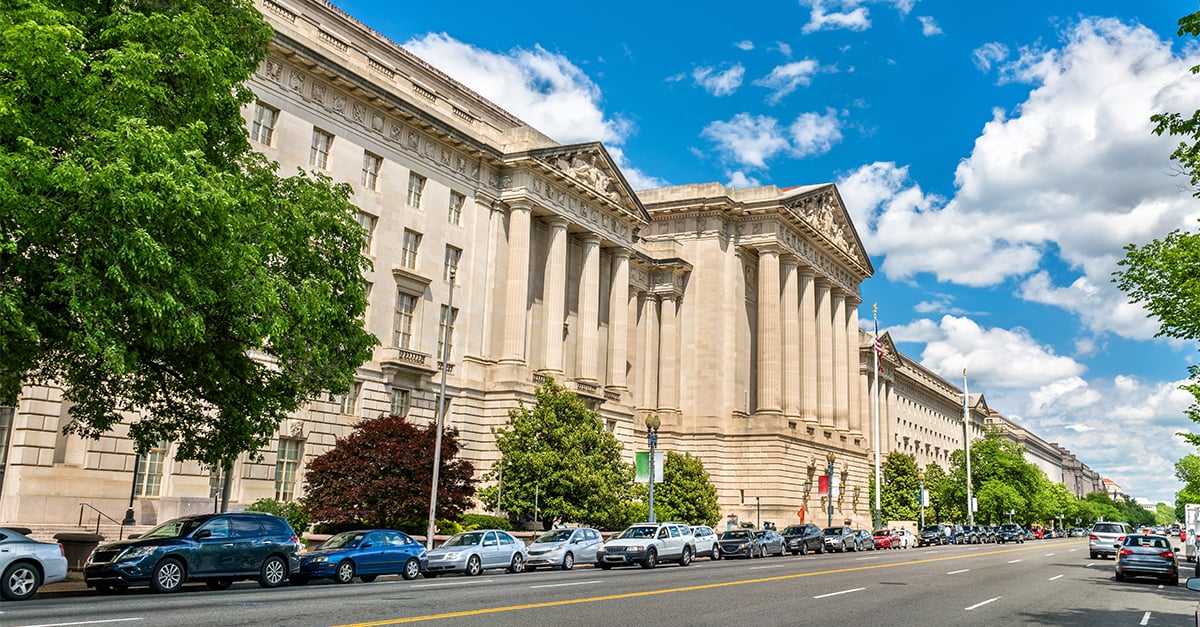
U.S. Federal Courts Vacate Federal Highway Administration Greenhouse Gas Rule
On Tuesday, April 2, 2024, in Commonwealth of Kentucky v. Federal Highway Administration¸ No. 23-162 (W.D. Ky.), the U.S. District Court for the Western District of Kentucky vacated the Federal Highway Administration December 2023 Greenhouse Gas Rule (see our prior blog post here for a more detailed summary of the Rule). That rule, proposed in July 2022 and modeled off of a rule proposed by the Obama administration in 2017 but repealed by the Trump administration before it could take effect, sought to require each state to set declining targets for tailpipe carbon dioxide emissions from vehicles on the National Highway System. Tuesday’s ruling follows a similar one from the U.S. District Court for the Northern District of Texas on March 28, 2024, in State of Texas v. U.S. Dep’t of Trans. No. 23-304 (N.D. Tex.) that purported to vacate the rule nationwide.
The Newest Phase of EPA’s Greenhouse Gas Emissions Standards: Phase 3
On March 29, 2024, the U.S. Environmental Protection Agency (EPA) announced its most recent national greenhouse gas (GHG) pollution standards for heavy-duty (HD) vehicles, including HD vocational vehicles and tractors. The rule establishes new CO2 emission standards for model year (MY) 2032 and later HD vehicles, with more stringent CO2 standards phasing in as early as MY 2027 for certain vehicle categories.
U.S. Department of Transportation Publishes Final Rule on State Greenhouse Gas Performance Measures
On December 7, U.S. Department of Transportation Federal Highway Administration (FHWA) published a final rule providing state Departments of Transportation (DOTs) and Metropolitan Planning Organizations (MPOs) a national framework to track transportation-related greenhouse gas (GHG) emissions and set targets for reduction. The rule adds a new GHG performance management measure to the existing FHWA national performance measures and creates a system under which state DOTs and MPOs must set targets for reducing roadway travel GHG emissions. Stakeholders that contract with states to build infrastructure should take note of these new mandates.
U.S. Publishes Fifth National Climate Assessment
On November 14, 2023, the U.S. Global Change Research Program (USGCRP) published the Fifth National Climate Assessment. The National Climate Assessment (NCA) is a federal initiative formed under the Global Change Research Act of 1990, which requires a report to the President and the Congress every four years that integrates, evaluates, and interprets the findings of the USGCRP; analyzes the effects of global change on the natural environment, agriculture, energy production and use, land and water resources, transportation, human health and welfare, human social systems, and biological diversity; and analyzes current trends in global change and projects major trends for the subsequent 25 to 100 years. Before this NCA, four assessments were published (in 2000, 2009, 2014, and 2017).

White House Announces Plan to Use Transportation Funding to Convert Commercial Properties Into Residential Use
On Friday, October 27, 2023, the White House announced an effort to utilize over $35 billion in federal assistance for affordable housing projects using funding appropriated under the Transportation Infrastructure Finance and Innovation Act and Railroad Rehabilitation & Improvement Financing programs. The White House, through the Department of Transportation, is now seeking to use these programs, which provide lending support for transit-oriented development projects at below-market interest rates, to convert properties no longer needed for transit into residential properties and develop residential properties near public transportation hubs. The White House suggests that these conversions and development projects will not only provide necessary affordable residential housing capacity but also reduce greenhouse gas emission by repurposing existing structures and siting residential housing projects near public transportation hubs.

U.S. EPA Enforcement Office Issues a Climate Enforcement and Compliance Strategy Memorandum
On September 28, 2023, the U.S. Environmental Protection Agency (EPA) Office of Enforcement and Compliance Assurance (OECA) issued a memorandum outlining a Climate Enforcement and Compliance Strategy, identifying several steps the office plans to take to address climate change (the Strategy Memo). As part of the strategy, EPA plans to expand its efforts to address climate change by increased enforcement of rules governing greenhouse gas–forming pollutants and incorporating climate-related mitigation efforts, including renewable energy projects into settlements as mitigation or supplemental environmental projects. The Strategy Memo comes only a month after EPA issued its first-ever national enforcement and compliance initiative on climate change.

EPA Proposes Granting Louisiana Primacy Over Carbon Sequestration Well Program
The U.S. Environmental Protection Agency (EPA) proposed to approve Louisiana’s request for control over the permitting of carbon sequestration wells in the state. EPA’s approval would provide Louisiana authority under the Safe Drinking Water Act (SDWA) Underground Injection Control (UIC) program to administer a “Class VI” injection well program for the geologic sequestration of carbon dioxide, following similar such approvals for North Dakota and Wyoming. Stakeholders should take note of this proposed action because EPA approval of Louisiana’s program could advance carbon capture and sequestration (CCS) projects stymied by the backlog of permit applications pending before the EPA.
EPA Announces Enforcement Actions to Control Hydrofluorocarbon Imports
On March 2, 2023, the U.S. Environmental Protection Agency (EPA or Agency) announced several enforcement actions that support reducing the use of hydrofluorocarbons (HFCs). These actions include the following:

California Senator Reignites Corporate Greenhouse Gas Emissions Disclosure Bill
A new bill introduced in the California legislature tees up corporate disclosure legislation that narrowly failed to pass the State Assembly during last year’s term. The bill would impose broad greenhouse gas (GHG) reporting requirements on large businesses doing business in California and could effectively set a national standard for these businesses to report GHG emissions.
California Air Resources Board Set to Finalize Ambitious Climate Plan
On November 16, 2022, the California Air Resources Board (CARB) released an updated version of its 2022 Scoping Plan for Achieving Carbon Neutrality. The plan sets ambitious goals for achieving carbon neutrality in California by 2045. Despite the plan’s being only a guiding document, it will likely lead to other agency actions that set stringent requirements related to reducing greenhouse gas emissions.

